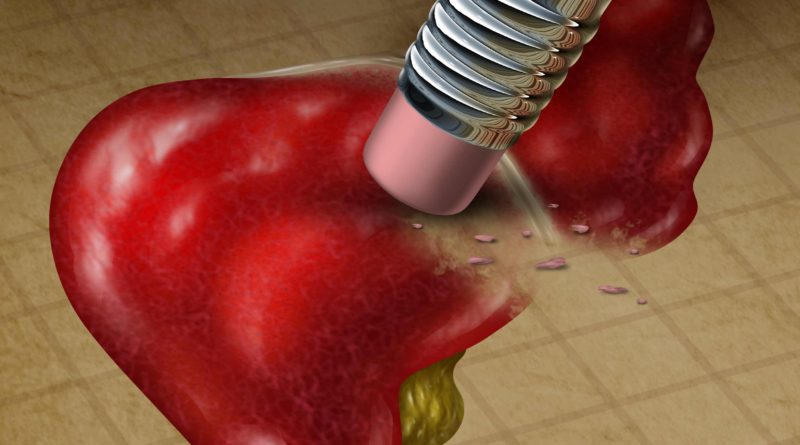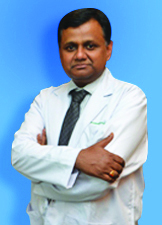Easier to Avert than Treat
Take effective steps to prevent liver disease as it’s all in your hands
By Dr Piyush Ranjan
Liver is a solid organ, located in the right upper part of the abdomen just below the rib cage. It is a complex organ both structurally and functionally. Liver is a pivotal organ for metabolic functions of our body. The function of liver can be categorized into two major groups: excretory function and synthetic function.
Most foreign substances and waste product made in body are metabolized within the liver before being excreted via bile or kidney. Excretion of bilirubin from liver is important as defect in bilirubin excretion leads to jaundice. Liver is the site of synthesis of all major proteins in body. These proteins are building blocks for all important functions in body. Bile is synthesized in liver and which helps in digestion of fat in body. Liver also plays an important role in fat and carbohydrate metabolism.
Symptoms of liver disease
Early or mild form of liver diseases may give rise to non-specific symptoms like fatigue or weakness. Significant liver injury can cause jaundice, which means yellow discoloration of sclera of eye ball and is associated with dark yellow urine. Liver cirrhosis results from persistent damage to liver due to any cause (alcohol, hepatitis B & C). Common manifestations of liver cirrhosis are ascites (accumulation of fluid in the abdomen), loss of consciousness (coma) and bleeding from gastrointestinal tract in form of vomiting of blood.
Contrary to popular belief, liver diseases are not associated with problems of digestion. Many people attribute any upper abdominal discomfort to liver related problem, which is fallacious.
Causes of liver diseases and their prevention
Liver diseases are of two types: (a) Short lasting and self limiting which resolves completely without causing any permanent damage or functional impairment and (b) Smoldering slow diseases which cause a permanent damage to liver which is manifest as “liver cirrhosis”.
The major causes of liver diseases are viral hepatitis (A, B C, D & E), alcohol intake, fatty liver disease, inherited and metabolic diseases and drugs. Liver can in addition be involved in any generalized disease process like infection (eg: typhoid, malaria, dengue) or various malignancies.
Among the hepatitis viruses, Hepatitis A and E causes jaundice, which is self-limiting. Hepatitis A and E are spread by contaminated food and water. Thus if we have safe drinking water supply and pay attention to hygiene, these diseases can be prevented. There is vaccine available for hepatitis A and can be used safely at any age. There is no vaccine available for hepatitis E at present but safe drinking water could be the most effective measure to control hepatitis.
Hepatitis B and C cause chronic infection of liver, which can lead to cirrhosis of liver. Hepatitis C is the leading cause of cirrhosis worldwide. In our country hepatitis B is a major challenge. Both hepatitis B and C are spread by blood transfusion, needle sharing, sexual contact and from mother to child. Thus to a large extent, these things are preventable by simple measures like improving testing in blood bank, increasing awareness for voluntary blood donation, educating people against reuse or needle sharing and safe sex practices. In addition we have a very effective vaccine against hepatitis B. There is no vaccine against hepatitis C is as yet. Hepatitis C has a very high prevalence in parts of India where intravenous drug abuse is rampant. Public awareness is the most important tool in preventing the spread of this disease.
Alcohol is very important cause of liver disease. Alcohol consumption has increased across all social, age and gender groups. Awareness about alcohol consumption is of paramount importance in preventing liver disease. Lack of self help groups and social stigma in approaching them prevents people in need of help from coming out in open. We need a massive public awareness campaign to educate people about safe and responsible alcohol consumption.
Fatty liver is a condition usually picked up incidentally on routine ultrasound and investigation for deranged liver function tests. It is a slowly progressive disease but in a significant number of subjects can lead to liver cirrhosis over years to decades. The most common causes for fatty liver are obesity and diabetes. The epidemic of fatty liver has grown with rise in these lifestyle diseases. In western world, it is already the second most common cause of liver cirrhosis after hepatitis C. Prevention remains the cornerstone of treatment of treatment of fatty liver. Adopting a healthy lifestyle with dietary precautions are more effective than medication in early course of this disease.
Measures for keeping liver healthy
The concept of prevention of liver diseases has still not caught up. The fact remains that most liver diseases can be avoided by simple interventions such as the following:
Keeping alcohol intake in moderation
Hepatitis B vaccination
Avoiding reuse of needles, sharing needles.
Promoting voluntary blood donation and improving surveillance of blood products
Control of obesity
Safe drinking water
Avoiding unprescribed medications
(The author is DM, Gastroenterology, Sr. Consultant, Sir Ganga Ram Hospital, New Delhi)


